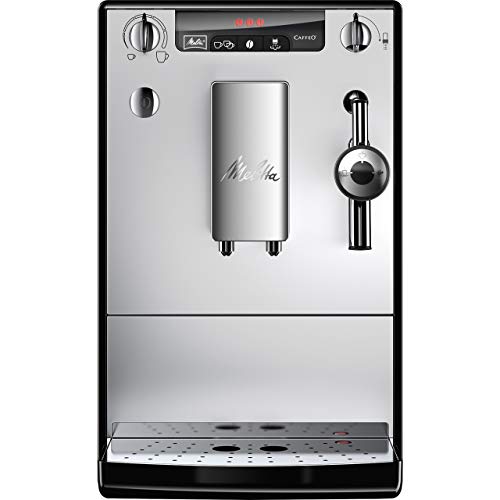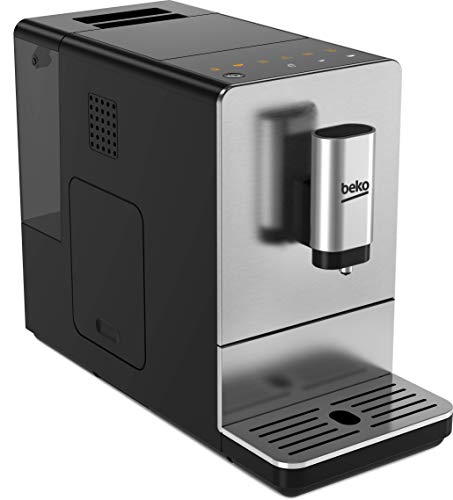인사말
건강한 삶과 행복,환한 웃음으로 좋은벗이 되겠습니다

룸갤러리
Is Machine Coffee As Important As Everyone Says?
페이지 정보
작성자 Kerstin 작성일25-02-12 14:28 조회8회 댓글0건본문
 What Goes On Inside a Machine Coffee Maker?
What Goes On Inside a Machine Coffee Maker?Coffee machines make it simple to enjoy a hot cup of joe in the comfort of your own home. The most popular models come with an adjustable timer and an integrated grinder.
When you turn on the power, sensors control the heating element which circles the warming plate. It also has an aluminum water tube that goes through it.
Cold-Water Tube
A machine coffee maker is a device that takes the water you put into it and turns it into your cup of coffee. This is done by boiling water and forcing it through a mechanism that creates high pressure. These machines can use up to 15 bars of pressure in contrast to coffee percolators that only operate at one bar.
There is a reservoir in the bottom of your machine that appears like a bucket and holds the water used to make your drink. This reservoir has a hole at the bottom. It connects to the tube that is inside the heating element on one end and to an insulated tube running from the bottom of your machine up to the tap on the other.
When you turn on your machine, the water inside the reservoir is pushed up into the heating chamber and the thermostat instructs it to warm up. As the water gets hotter it expands. This pushes a filter beneath a portafilter which has been filled with espresso and then tamped. The pressure causes the screen to break through the filter, allowing the espresso into your cup.
The espresso that is brewed out of your machine is a rich, delicious coffee that may have different levels of acidity, based on the type of beans you choose. If you find your espresso to be unpleasant, you can try using an alternative filter or coarsely ground beans. If the issue continues then you must schedule an authorized service technician to perform the de-liming procedure to clear out your machine. The most frequent cause of this problem is lime scale.
Hot-Water Tube
The white tube that is insulated at the base of your coffee maker is referred to as the hot-water tub. It carries hot water from the heating unit to the faucet that is on the top of the pro coffee machines maker. This water saturates the grounds, carrying their flavors down into your waiting pot of coffee.
Certain coffee makers have the ability to keep the water warm so that it's ready to drink when you get up. This is accomplished by using a heater to produce some steam. The steam is then directed towards the spout to keep your coffee warm until ready to pour it.
Although it could appear that a coffee maker is complex and expensive The majority of models are easy to use and have little moving parts. A good cleaning and regular use should keep your machine in good condition for a long time to come.
Many coffee machines with built-in grinders allow the addition of ground coffee machine coffee from a container, secure the portafilter into place and then activate the switch inside to start the process of brewing. The pump will pressurize heated water until it reaches 220 PSI pressure when the switch is flipped.
One of the biggest frustrations when making the perfect cup of coffee is having refill the reservoir frequently. Some coffee makers have machines that connect directly to the water line. This allows you to bypass the reservoir. There are kits for those looking to do it themselves. They can transform any machine into a coffee maker that connects directly to a home water line. This procedure is more complicated and requires drilling holes into your machine to accommodate an adapter. This could weaken your coffee maker's construction and cause cracks in the areas where you've drilled. It's recommended that you purchase a coffee maker that is designed to take a direct water line for the best results.
Resistive Heat Element
The heater is a piece of metal that has a specific kind of electrical resistance. It limits current flow but not stopping it entirely, and some of the energy that is blocked is converted into heat. This is what warms the water in the boiler of your coffee maker.
The heating element is situated on the left side of the base of the machine and it resembles an ordinary light bulb filament or the element in your electric toaster. It consists of an aluminum extrusion having two sections, a tube that allows water to flow through, and the heating element itself that is resistive (Check video here). This coiled wire heats up because of the resistance it has.
When you switch on your coffee maker, the element is heating the aluminum water tube to that it is boiling. The bubbles will then rise through the white tube and then be sprayed on your coffee grounds using the shower head. The water spray absorbs the essential oils from the coffee beans that are ground when it descends, and also includes caffeine.
If you have a problem with your coffee maker, and the hot water isn't flowing out, it's probably due to a defective pressure switch or best coffee machine uk heating element thermostat. You can test both by using a multi-meter to perform the continuity check. Connect one pole to the electrical connector and the second to the body of the flange. It should show at least 1. If the reading isn't there, then you have to replace the switch or thermostat.
The other main part of your coffee machine that can be a source of issues is the water pump, or reservoir. It could get blocked with lime and that is why you need to run the mixture of water and a descaling solution through it.
Warming Plate
A warming plate is a metal surface that is heated that keeps coffee warm in a cup once it has been brewed. This feature is popular coffee machines with diner coffee drinkers and can be a valuable addition to the kitchen of a home. The warming plate is susceptible to get rusty and ruin the taste, so it is important to keep it clean. The best coffee machine uk (research by the staff of ondemand.kaylolife.com) method of cleaning the heating plate of a coffee maker is to use a mix of oxalic acid and water.
Oxalic acid is an effective cleaning agent that can be used to get rid of the rust from sinks, pipes gas stove burners and a variety of other household items. It is a very effective solution for cleaning the rusty warming plate in your coffee maker, and can be purchased from most hardware stores. This product could cause serious burns and injuries if it is not handled properly.
If you're cleaning a rusty coffee maker heating plate, first check that the coffee maker is unplugged. This will prevent any possible damage caused by the heat of the cleaning products. Rubber gloves are also recommended, since oxalic acid can be rough on skin.
Then then, apply white vinegar to the rusty area of the coffee maker's heating plate. This will react chemically and dissolve the rust. Then, scrub the area with a rag or brush until it is completely clean. If your coffee maker is very damaged, you may have to repeat the process several times to get it completely clean. Be sure to wait until the oxalic acids have completely evaporated before plugging the coffee maker in again.
Aluminum Water Tube
The machine will begin making coffee as soon as you switch it on. It appears to be simple enough, but there is a lot going on in the process of turning the scoops of ground and a few cups of water into a steaming hot beverage.
First, the cold water goes in through a hole in the bottom of your reservoir and then into the aluminum tube that is beneath the resistive heating element. The aluminum water tube heats up and, when it reaches the boiling point, bubbles appear that push water upwards up the white tube in the center of the coffee machine black friday maker.
The hot water squirts through the top of the tube, transforming into the perforated disc that is known as the shower head. (Or basket in some machines). Here, the hot water is sprayed onto the coffee grounds, absorbing the oil essence.
Then the water flows through the coffee, then back up through the filter into the pot. The pump's oscillating pressure is the reason for this. The shearing force exerted by the expanding and contracting bubble boundaries separates ground coffee particles from the water, leaving behind an espresso-like drink that is strong and smoky.
Be aware that your machine is dependent on many different components. They are all interconnected. Any one of these components that break down or malfunction can impact the entire process, so if you notice any strange sounds or vibrations while your machine is in operation look for loose parts. The loose components can cause noise and weaken connections. This could lead to further problems.

댓글목록
등록된 댓글이 없습니다.